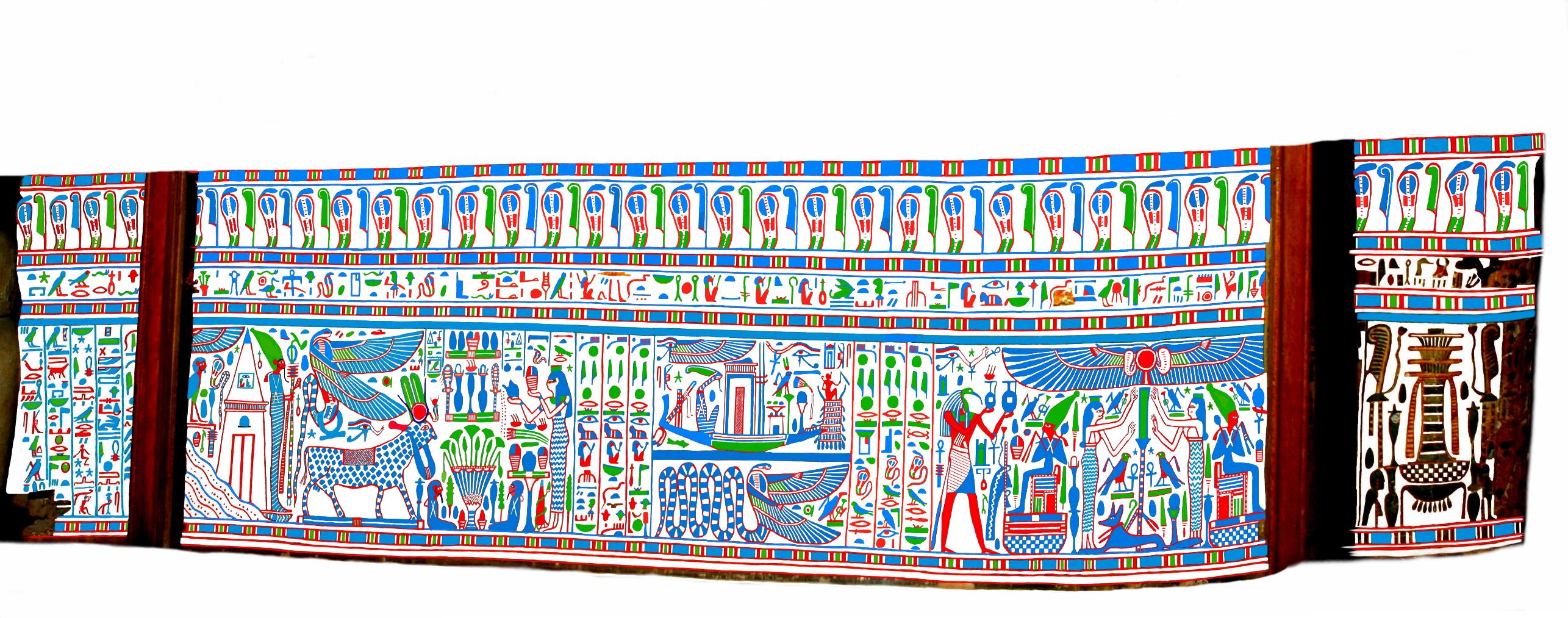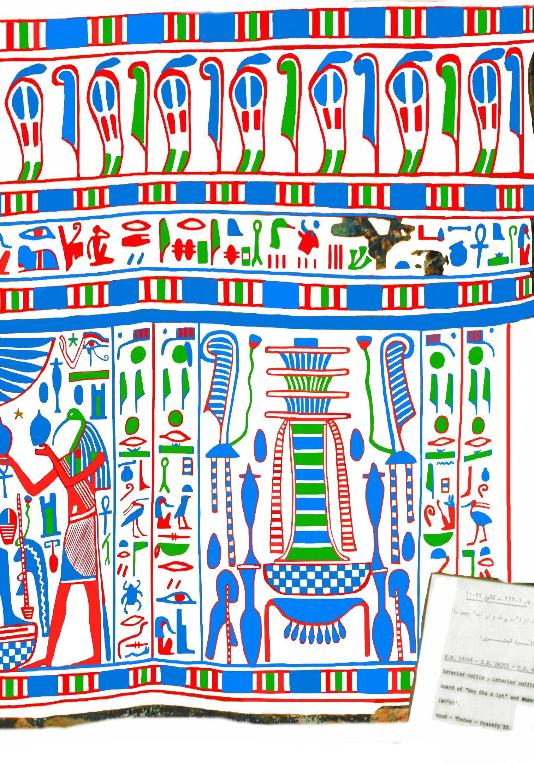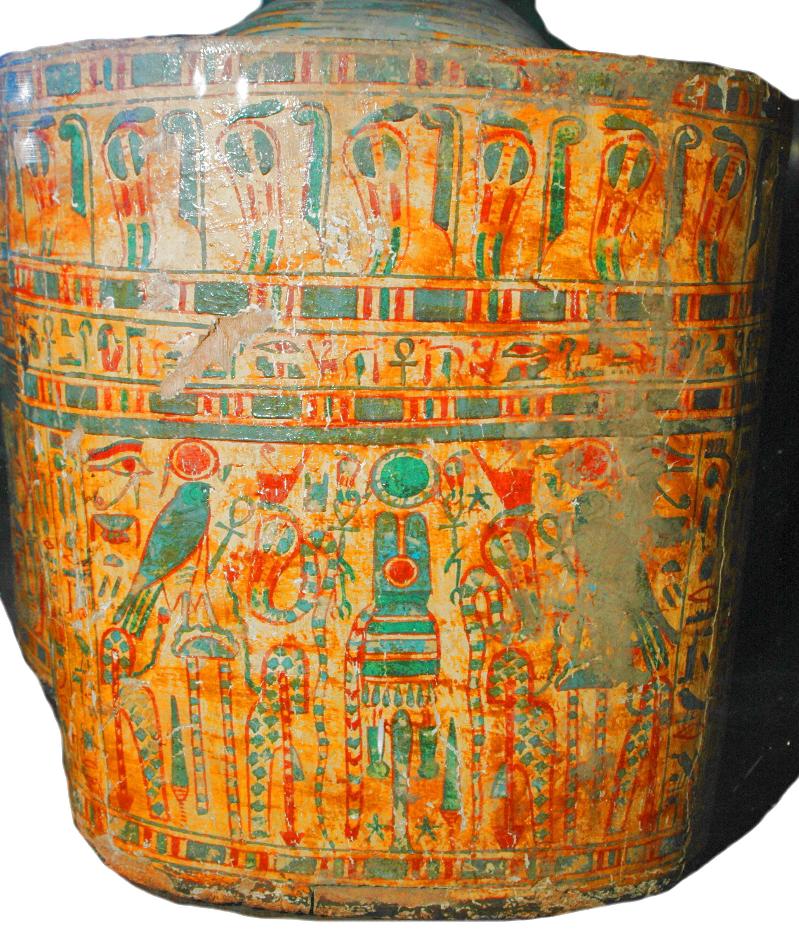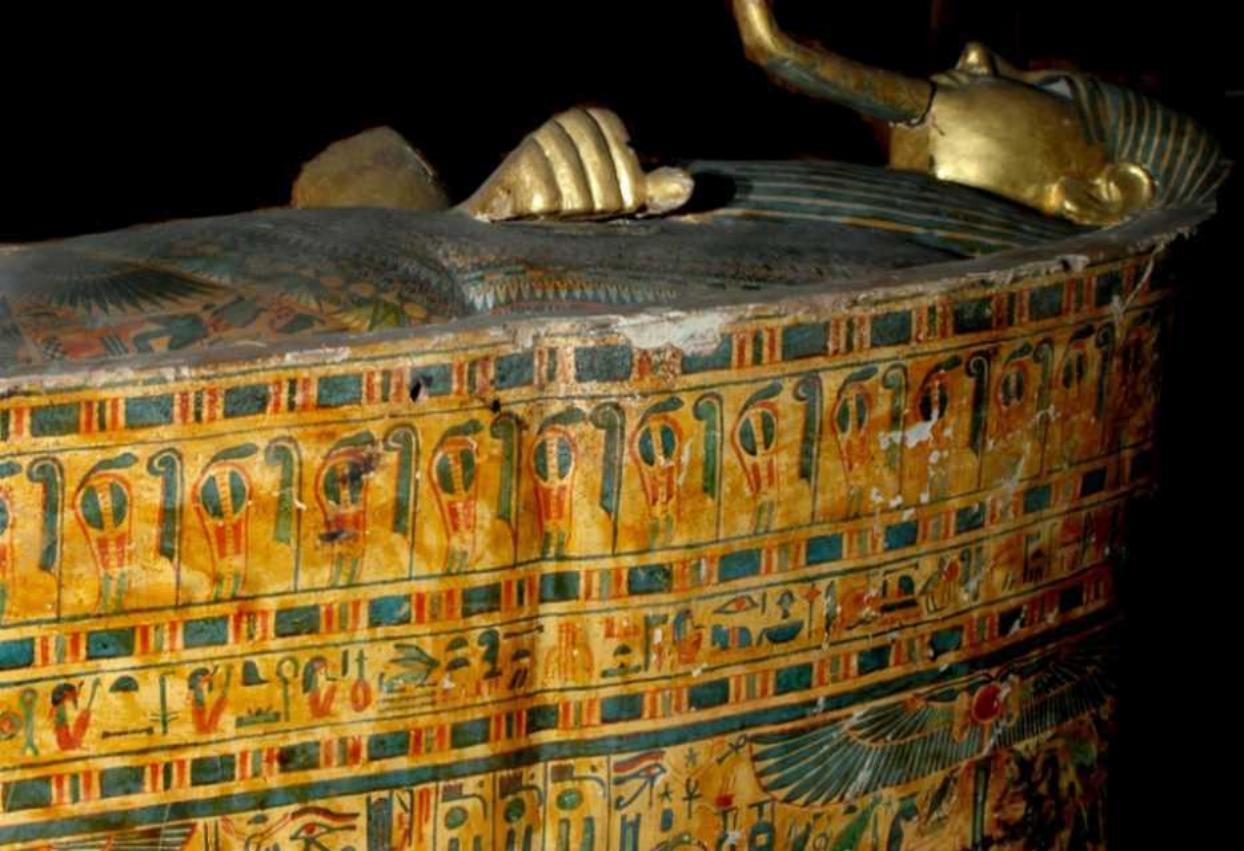| Russian Academy of Sciences Centre for Egyptological Studies, Moscow (CESRAS) & Russian Institute of Egyptology in Cairo (RIEC) Research on the Funerary Art of the 21a Theban Dynasty of Payanch and Personages of that Period (1070-945 BCE) Coffin of Djedptahjwefanch, 3rd Prophet of Amun, 21a-22 Dynasties, Thebes Found in the Royal Cache TT320 in 1881, Cairo National Museum CG61034 Site Directory Personages Artifacts Iconography Coffins Directory Royal Cache TT320 Network Index |
Intellectual property of the Russian Academy of Sciences, Centre for Egyptological Studies (CESRAS), Moscow R. F.: This material may be used freely for non-commercial purposes. It may
not be altered in any manner by digital manipulation. If you use it, please give us a credit. Should you have any questions or suggestions, please contact us at admin@cesras.org. We
hope that you are enjoying your visit to our site and hope that you will come again soon. This is an "open-end" project and there will always be something new.
not be altered in any manner by digital manipulation. If you use it, please give us a credit. Should you have any questions or suggestions, please contact us at admin@cesras.org. We
hope that you are enjoying your visit to our site and hope that you will come again soon. This is an "open-end" project and there will always be something new.
Above is the left side of the coffin as it appears today. However, it was not originally yellow. The yellowing and mutation of colours
was caused by the darkening during some 3000 years of a coat of varnish applied after the painting was finished. This is the case
with most of the so-called "yellow coffins" of the21a Theban Dynasty of the High Priests of Amun (1070-945 BCE). This coffin of first
class 21a Dynasty quality was usurped from a man named Nesyshuenopet of whom we know nothing except that his coffin was
made long before being usurped by its final owner. The mummy-cover was usurped from an unknown man.
Below is a restoration of the decoration as it looked when the painting on the white gesso background was finished and no varnish
applied.
was caused by the darkening during some 3000 years of a coat of varnish applied after the painting was finished. This is the case
with most of the so-called "yellow coffins" of the21a Theban Dynasty of the High Priests of Amun (1070-945 BCE). This coffin of first
class 21a Dynasty quality was usurped from a man named Nesyshuenopet of whom we know nothing except that his coffin was
made long before being usurped by its final owner. The mummy-cover was usurped from an unknown man.
Below is a restoration of the decoration as it looked when the painting on the white gesso background was finished and no varnish
applied.
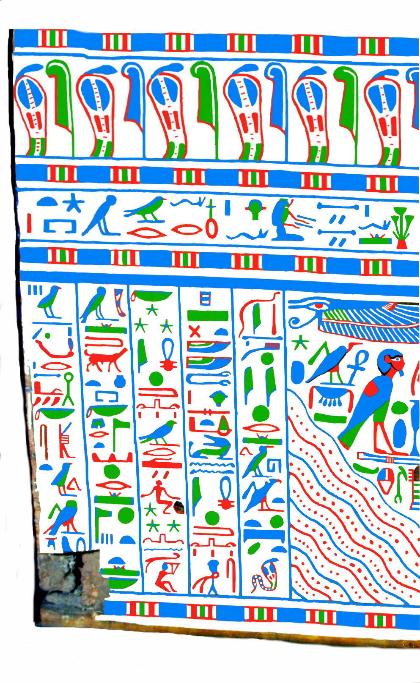
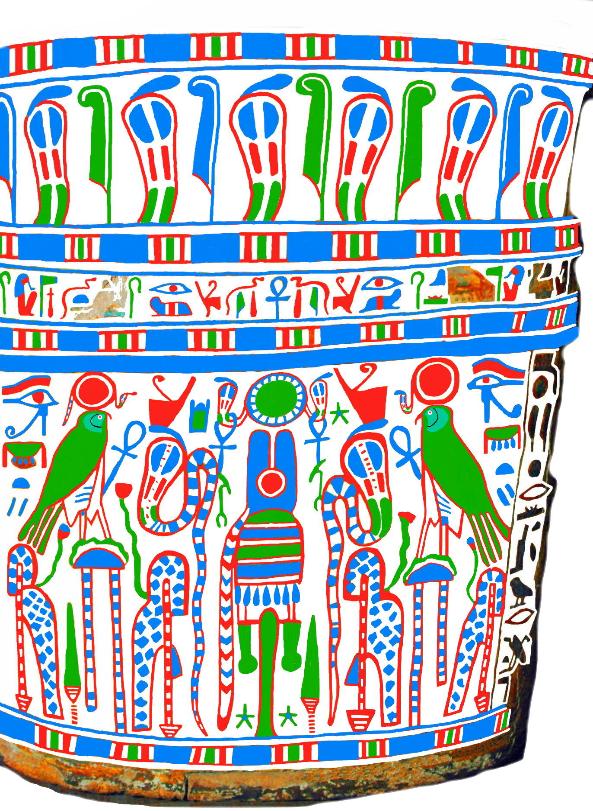
Head of the coffin as it is today. The yellowing of the
varnish has mutated the blue parts of the decoration
to green.
varnish has mutated the blue parts of the decoration
to green.
A view of the upper portion of the inner coffin, showing the gilded mask, beard and
hands. Here you can clearly see that the blue decoration has become green. The
fact is that no one in our times has ever really seen these coffins. They were very
different than what one sees today. Compare the reconstructed painting below in
which the original colours have been faithfully restored. Everything was bright and
cheerful.
hands. Here you can clearly see that the blue decoration has become green. The
fact is that no one in our times has ever really seen these coffins. They were very
different than what one sees today. Compare the reconstructed painting below in
which the original colours have been faithfully restored. Everything was bright and
cheerful.

